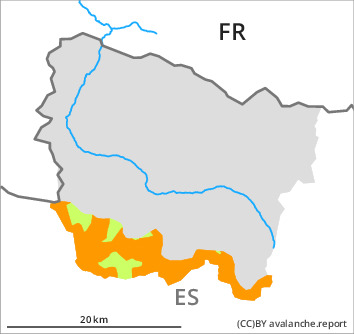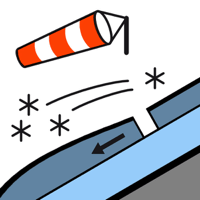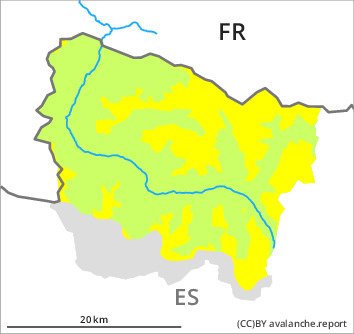
Danger level

1800m
Avalanche Problem

Wind slab

1800m


Wind slabs are to be evaluated critically.
More recent wind slabs can be released by a single winter sport participant on steep west, north and east facing slopes above approximately 1800 m, especially at their margins. In many cases the avalanches are medium-sized and very easily released. Wind-loaded slopes where hard layers are lying on a weakly bonded old snowpack are especially precarious.
Also in places that are protected from the wind and shady slopes: The old snowpack is faceted and weak. This snow can be released by a single winter sport participant in isolated cases on extremely steep northeast, north and northwest facing slopes. Here the avalanches are only shallow.
Apart from the danger of being buried, restraint should be exercised as well in view of the danger of avalanches sweeping people along and giving rise to falls. Backcountry touring calls for extensive experience and great restraint. Released avalanches and stability tests confirm a very dangerous avalanche situation especially in gullies and bowls and behind abrupt changes in terrain.
Also in places that are protected from the wind and shady slopes: The old snowpack is faceted and weak. This snow can be released by a single winter sport participant in isolated cases on extremely steep northeast, north and northwest facing slopes. Here the avalanches are only shallow.
Apart from the danger of being buried, restraint should be exercised as well in view of the danger of avalanches sweeping people along and giving rise to falls. Backcountry touring calls for extensive experience and great restraint. Released avalanches and stability tests confirm a very dangerous avalanche situation especially in gullies and bowls and behind abrupt changes in terrain.
Snowpack
>
On Tuesday the wind was strong to storm force over a wide area. The southerly wind has transported the loosely bonded old snow. The fresh wind slabs are lying on weak layers on shady slopes.
In all regions less snow than usual is lying. At low altitude from a snow sport perspective, in most cases insufficient snow is lying. At intermediate and high altitudes there are 50 to 70 cm of snow, and even more in some localities. In high Alpine regions snow depths vary greatly, depending on the infuence of the wind.
In all regions less snow than usual is lying. At low altitude from a snow sport perspective, in most cases insufficient snow is lying. At intermediate and high altitudes there are 50 to 70 cm of snow, and even more in some localities. In high Alpine regions snow depths vary greatly, depending on the infuence of the wind.
Tendency
Friday: The danger of dry avalanches will decrease gradually. Gradual increase in danger of moist snow slides as a consequence of warming during the day and solar radiation.

